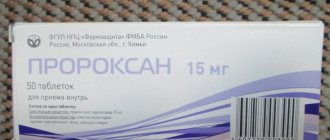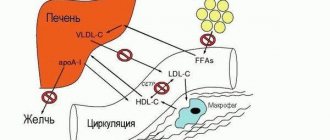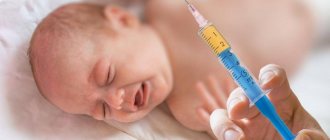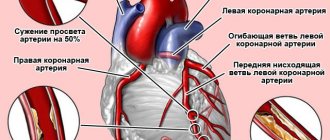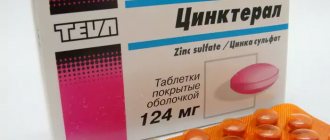Write a review
Reviews: 0
Manufacturers: Shandong Keyuan Pharmaceutical Co. ltd.
Active ingredients
- Gentamicin
Disease class
- Acute upper respiratory tract infection of multiple and unspecified localization
- Pneumonia without specifying the pathogen
- Acute lower respiratory tract respiratory infection, unspecified
- Bronchitis, not specified as acute or chronic
- Abscess of the lung and mediastinum
- Pyothorax
- Skin abscess, boil and carbuncle
- Peritonitis
- Pyoderma
- Infectious myositis
- Tendon sheath abscess
- Other infectious (teno)synovitis
- Abscess of the bursa
- Other infectious bursitis
- Osteomyelitis
- Pleurisy
- Postpartum sepsis
- Other postpartum infections
- Diarrhea and gastroenteritis of suspected infectious origin
- Septicemia, unspecified
- Post-traumatic wound infection, not elsewhere classified
- Other tubulointerstitial kidney diseases
- Urinary tract infection without established localization
Clinical and pharmacological group
- Not indicated. See instructions
Pharmacological action
- Antibacterial
Pharmacological group
- Aminoglycosides
Compound
The solution for intravenous and intramuscular administration contains the active component gentamicin sulfate , as well as a number of additional components: sodium metabisulfite, disodium ethylenediaminetetraacetic acid, water.
Eye drops contain the active component gentamicin sulfate , as well as additional components: sodium dihydrogen phosphate monohydrate, sodium chloride, sodium hydrogen phosphate dodecahydrate, benzalkonium chloride solution, water.
Release form and composition
Dosage form of Gentamicin sulfate - solution for injection: transparent, with a slight yellowish tint or colorless [in glass ampoules of 2 ml, in plastic blisters of 5 or 10 ampoules or in a cardboard box 1 package of 10 ampoules or 2 packages of 5 ampoules (in depending on the manufacturer)].
Composition of 1 ml solution:
- active ingredient: gentamicin (in the form of gentamicin sulfate) – 40 mg;
- excipients (depending on the manufacturer): sodium metabisulfite, disodium salt of ethylenediaminetetraacetic acid, water for injection; or anhydrous sodium sulfite and water for injection.
pharmachologic effect
Gentamicin is an antibiotic that exhibits a wide spectrum of effects and belongs to the group of aminoglycosides. In the body, it binds to the 30S subunit of ribosomes, as a result of which protein synthesis is disrupted and the production of the transport and messenger RNA complex is suspended. RNA is misread and nonfunctional proteins are produced. A bactericidal effect is observed - at high concentrations of the substance, it reduces the barrier functions of cytoplasmic membranes, as a result of which microorganisms die.
There is a high sensitivity to this antibiotic on the part of some gram-negative microorganisms.
Sensitivity to the substance of a number of gram-positive microorganisms was also noted.
Antibiotic resistance is demonstrated by: Neisseria meningitidis, Providencia rettgeri, Clostridium spp., Treponema pallidum, Bacteroides spp., Streptococcus spp.
If Gentamicin is combined with penicillins , its activity is noted against Enterococcus faecium, Enterococcus faecalis, Enterococcus avium, Enterococcus durans, Streptococcus faecium, Streptococcus durans, Streptococcus faecalis.
Resistance of microorganisms to this drug develops slowly, but those strains that demonstrate resistance to neomycin and kanamycin may also be resistant to the effects of gentamicin. It has no effect on fungi, protozoa, or viruses.
Side effects
Streptomycin sulfate is characterized by a number of side effects that may occur while taking the medication. These include:
- Temperature increase
- Dermatitis
- Nephrotoxicity
- Headache, dizziness
- Joint pain
- Leukopenia
- Increased heart rate
- Hematuria
- Albuminuria
- Impaired coordination of movements
- Diarrhea, nausea, vomiting
- Hearing impairment (development of deafness with long-term use)
- Blockage of nerve impulse transmission, respiratory arrest.
Treatment should be carried out strictly under the supervision of a doctor. This will help ensure a timely response to the deterioration of the patient’s well-being and take measures to preserve the patient’s health and life.
Pharmacokinetics and pharmacodynamics
After intramuscular administration, rapid and complete absorption of the substance occurs. The maximum concentration in the body after intramuscular administration is achieved after 0.5-1.5 hours. After a 30-minute intravenous infusion - after 30 minutes, after a 60-minute intravenous infusion - after 15 minutes.
Little binds to plasma proteins - up to 10%. Therapeutic concentrations of the substance are found in the kidneys, liver, lungs, as well as in body fluids - peritoneal, ascitic, synovial, pericardial, pleural, lymphatic; found in pus discharged from wounds, granulations, and urine.
Low concentrations of the substance are observed in muscles, adipose tissue, breast milk, bile, bones, sputum, bronchial secretions, cerebrospinal fluid, and eye moisture.
It almost does not penetrate the BBB in adult patients; it penetrates the placenta.
Concentrations in the cerebrospinal fluid of newborns are higher than in adults.
It is not metabolized in the body. The half-life in adults is 2-4 hours, in children under 6 months - 3-3.5 hours.
It is mainly excreted from the body through the kidneys, unchanged; small amounts of the antibiotic are excreted in the bile. If the patient’s kidney function is normal, then during the first day 70-95% of the substance is excreted. In this case, a concentration of more than 100 mcg/ml is observed in the urine. Cumulation is observed upon repeated administration.
Medicinal properties
The action of Streptomycin sulfate is based on the ability to have a bacteriostatic effect on a group of pathogens. A component of the drug disrupts the formation of messenger RNA, as a result of which protein synthesis stops. The population of pathogenic microorganisms stops growing and reproducing.
The medication has a bacteriostatic effect on a large number of aerobic bacteria, but is ineffective against anaerobes, rickettsia, plasmodium and viruses.
When taken orally, Streptomycin sulfate does not penetrate the gastrointestinal mucosa and is almost entirely excreted in the feces.
When the drug is injected intramuscularly, it quickly enters the bloodstream. After half an hour, therapeutic concentrations of the drug are recorded in the lungs, liver, kidneys, spinal canal and other organs. They remain in the body for about 6-8 hours. Streptomycin sulfate is not included in metabolic processes and is eliminated in the urine. The elimination time of the antibiotic is from 12 to 24 hours. If kidney function is impaired, the drug remains in the body for a longer period, which increases the likelihood of side effects.
Indications for use
Indications for use of the drug are diseases of an infectious-inflammatory nature that were provoked by microorganisms sensitive to gentamicin.
Parenteral use of the drug (4% solution) is indicated for the following diseases:
- pyelonephritis;
- acute cholecystitis ;
- cholangitis;
- cystitis;
- pneumonia;
- peritonitis;
- pleural empyema;
- ventriculitis;
- sepsis, purulent lesions of soft tissues and skin;
- infections due to wounds and burns;
- infections of joints and bones.
Injections in gynecology are used for severe inflammatory processes.
External use of the drug (Gentamicin ointment) is indicated for the following diseases:
- superficial folliculitis;
- pyoderma;
- furunculosis;
- seborrheic dermatitis infected;
- paronychia;
- sycosis;
- acne infected;
- manifestation of secondary bacterial infection in the case of viral and fungal diseases of the skin;
- wounds of various origins (bites, burns, ulcers, etc.);
- Infected varicose ulcers.
Local use of Gentamicin (eye drops) is advisable for the following diseases:
- blepharoconjunctivitis;
- blepharitis;
- conjunctivitis;
- meibomite;
- keratitis;
- keratoconjunctivitis;
- dacryocystitis.
Indications
An antibacterial drug for the treatment of diseases of cattle, poultry, bees, domestic animals, used in calves, piglets, young farm birds for therapeutic and prophylactic purposes and for therapeutic purposes in diseases of the gastrointestinal tract of bacterial etiology, for the treatment of respiratory tract infections in calves. Gentamicin for cows is used to treat mastitis during lactation. The dosage of gentamicin for animals is calculated depending on the type, route of administration, age and weight of the animal.
Side effects
During administration, certain side effects may occur:
- digestive system: hyperbilirubinemia, nausea and vomiting, increased activity of “liver” transaminases;
- hematopoiesis: leukopenia , anemia, thrombocytopenia, granulocytopenia;
- nervous system: paresthesia , headache, muscle twitching, numbness, epileptic seizures, drowsiness ; possible manifestation of psychosis in children;
- sense organs: tinnitus, hearing loss, labyrinthine and vestibular disorders, deafness;
- urination: nephrotoxicity with impaired renal function, rarely - renal tubular necrosis ;
- allergies: skin rash, fever , itching, eosinophilia, angioedema;
- laboratory parameters: hypokalemia, hypocalcemia, hypomagnesemia - in children;
- other manifestations: superinfection.
Substance-powder Gentamicin sulfate (Gentamicin sulfate)
Instructions for medical use of the drug
Description of pharmacological action
It has a wide spectrum of antimicrobial action, inhibiting the growth of most gram-negative and gram-positive microorganisms. Highly active against Pseudomonas aeruginosa. Absorbed quickly. Penetrates the blood-brain barrier (barrier between blood and brain tissue). The maximum concentration in blood serum is observed one hour after injection. With repeated administration at a dose of 0.4-0.8 mg/kg with an interval of 8 hours, cumulation of the drug is observed (accumulation of the drug in the body). Excreted from the body by the kidneys.
Indications for use
Urinary tract infections: pyelonephritis (inflammation of the kidney tissue and renal pelvis), cystitis (inflammation of the bladder), urethritis (inflammation of the urethra); respiratory tract: pneumonia (inflammation of the lungs), pleurisy (inflammation of the membranes of the lung), empyema (accumulation of pus in the lungs), abscess (ulcer) of the lung; surgical infections: surgical sepsis (blood infection by microbes from the focus of purulent inflammation), peritonitis (inflammation of the peritoneum); skin infections: furunculosis (multiple purulent inflammation of the skin), dermatitis (inflammation of the skin), trophic ulcers (slow-healing skin defects), burns - caused by pathogens resistant to other broad-spectrum antibiotics.
Release form
substance-powder 5 billion IU; aluminum container; substance-powder 10 billion IU; aluminum container; substance-powder 20 billion IU; aluminum container; substance-powder 1 billion IU; aluminum container;
Pharmacodynamics
It has a wide spectrum of antimicrobial action, inhibiting the growth of most gram-negative and gram-positive microorganisms. Highly active against Pseudomonas aeruginosa. Absorbed quickly. Penetrates the blood-brain barrier (barrier between blood and brain tissue). The maximum concentration in blood serum is observed one hour after injection. With repeated administration at a dose of 0.4-0.8 mg/kg with an interval of 8 hours, cumulation of the drug is observed (accumulation of the drug in the body). Excreted from the body by the kidneys.
Use during pregnancy
During pregnancy, it is possible only for health reasons (adequate and strictly controlled studies have not been conducted in humans. There are reports that other aminoglycosides led to deafness in the fetus). During treatment, it is necessary to stop breastfeeding (passes into breast milk).
Contraindications for use
Hypersensitivity (including a history of other aminoglycosides). For systemic use: severe renal failure with azotemia and uremia, azotemia (residual nitrogen in the blood above 150 mg%), auditory neuritis, diseases of the auditory and vestibular system, myasthenia gravis.
Side effects
Systemic effects From the nervous system and sensory organs: ataxia, muscle twitching, paresthesia, numbness, epileptic seizures, headache, drowsiness, impaired neuromuscular transmission, ototoxicity - tinnitus, hearing loss, vestibular and labyrinthine disorders, including .h. dizziness, vertigo, irreversible deafness; in children - psychosis. From the cardiovascular system and blood (hematopoiesis, hemostasis): anemia, leukopenia, granulocytopenia, thrombocytopenia. From the gastrointestinal tract: nausea, vomiting, increased activity of liver transaminases, hyperbilirubinemia. From the genitourinary system: nephrotoxicity (oliguria, proteinuria, microhematuria); in rare cases, renal tubular necrosis. Allergic reactions: skin rash, itching, fever, angioedema, eosinophilia. Other: fever, development of superinfection; in children - hypocalcemia, hypokalemia, hypomagnesemia; reactions at the injection site - pain, periphlebitis and phlebitis (with intravenous administration). For external use: allergic reactions: local - skin rash, itching, skin hyperemia, burning sensation; rarely generalized - fever, angioedema, eosinophilia. When absorbed from large surfaces, systemic effects may develop. Eye drops: burning sensation after use, burning pain in the eye, tingling in the eyes, blurring, allergic reactions (itching, hyperemia and swelling of the conjunctiva).
Directions for use and doses
Before prescribing a drug to a patient, it is advisable to determine the sensitivity to it of the microflora that caused the disease in this patient. For urinary tract infections, a single dose for adults and children over 14 years of age is 0.4 mg/kg, daily 0.8-1.2 mg/kg. For patients with severe infectious disease, the daily dose can be increased to 3 mg/kg. For sepsis and other severe infections (peritonitis, lung abscess, etc.), a single dose for adults and children over 14 years of age is 0.8-1 mg/kg, daily - 2.4-3.2 mg/kg. The maximum daily dose is 5 mg/kg. For young children, the drug is prescribed only for health reasons for severe infections. The daily dose for newborns and infants is 2-5 mg/kg, 1-5 years old - 1.5-3.0 mg/kg, 6-14 years old - 3 mg/kg. The maximum daily dose for children of all ages is 5 mg/kg. The daily dose is administered in 2-3 doses. The average duration of treatment is 7-10 days. Intravenous injections are carried out for 2-3 days, and then switch to intramuscular administration. For intramuscular administration, use gentamicin sulfate in the form of a solution in ampoules or prepare a solution extempore (before use) by adding 2 ml of sterile water for injection to a bottle with powder (or porous mass). Only the prepared solution in ampoules is administered intravenously (drip). For inflammatory diseases of the respiratory tract, it is also used in the form of inhalations (0.1% solution). For pyoderma (purulent inflammation of the skin), folliculitis (inflammation of hair follicles), furunculosis, etc., an ointment or cream containing 0.1% gentamicin sulfate is prescribed. Lubricate the affected areas of the skin 2-3 times a day. The course of treatment is 7-14 days. For conjunctivitis (inflammation of the outer shell of the eye), keratitis (inflammation of the cornea) and other infectious and inflammatory eye diseases, eye drops (0.3% solution) are instilled 3-4 times a day.
Precautions for use
During treatment, the concentration of the drug in the blood serum should be determined (to prevent the prescription of low/ineffective doses or, conversely, an overdose of the drug). The concentration of gentamicin in the blood should not exceed 8 mcg/ml. When using parenteral gentamicin, one should be wary of muscle relaxation due to impaired neuromuscular conduction. Patients with infectious and inflammatory diseases of the urinary tract are recommended to take increased amounts of fluid. The likelihood of developing nephrotoxicity is higher in patients with impaired renal function, as well as when prescribed in high doses or for a long time, therefore regularly (1 or 2 times a week, and in patients receiving high doses or being treated for more than 10 days - daily ) renal function should be monitored. To avoid the development of hearing impairment, it is recommended to regularly (1 or 2 times a week) test vestibular function to determine hearing loss at high frequencies (if audiometric tests are unsatisfactory, the dose of the drug is reduced or treatment is stopped). During treatment, microbial resistance may develop. In such cases, it is necessary to discontinue the drug and prescribe treatment based on the antibiogram data.
Storage conditions
List B: In a dry place, protected from light, at a temperature not exceeding 25 °C.
Best before date
48 months
ATX classification:
J Antimicrobials for systemic use
J01 Antimicrobials for systemic use
J01G Aminoglycosides
J01GB Other aminoglycosides
J01GB03 Gentamicin
Instructions for use of Gentamicin (Method and dosage)
to use gentamicin sulfate , taking into account the location of the infection, the severity of the disease, and the sensitivity of the pathogen.
Gentamicin injections, instructions for use
Before starting treatment, it is recommended to determine the sensitivity of microflora to gentamicin.
The drug in ampoules when administered intravenously or intramuscularly to adults is indicated at a dose of 1.7 mg per kg of weight. The dose per day is 3-5 mg per kg of weight. The medicine must be administered 2-4 times a day. Treatment lasts from 7 to 10 days. For intramuscular administration, the powder is also used, after adding 2 ml of distilled water to the ampoule.
Gentamicin, depending on the disease, can also be used at a dose of 120-160 mg once a day for 7-10 days or at a dose of 240-280 mg once.
Intravenous administration is carried out over 1-2 hours.
Children are prescribed this medicine only for severe infectious diseases. Newborns and premature infants receive a daily dose of 2-5 mg per kg, the drug is administered twice a day.
Children under 2 years of age receive the same dose per day, the drug is administered three times a day.
Children over 2 years of age receive a daily dose of 3-5 mg per kg, the drug is administered three times a day.
In patients with impaired renal function, the dose needs to be adjusted.
The maximum dose per day for children and adults is 5 mg per kg of weight.
Gentamicin ointment, instructions for use
Gentamicin Akos ointment should be applied externally 3-4 times a day. Before application, necrotic masses and pus should be thoroughly removed. If the lesions are extensive, then the dose of ointment per day should not exceed 200 g. The duration of treatment is determined by the doctor.
Eye drops should be instilled 1-2 drops every 1-4 hours into the lower conjunctival sac. Patients with keratitis, conjunctivitis and other infectious and inflammatory eye diseases are recommended to drip a 0.3% solution of Gentamicin three times a day.
The product is not produced in tablets.
Similar drugs:
- Furacilin Solution for topical use
- Lactobacterin siccum dry (Lactobacterin siccum) Lyophilisate for the preparation of solution for oral administration
- Palin Capsule
- Bactrim Oral suspension
- Nitroxoline Oral tablets
- Pancef Oral tablets
- Nifuroxazide (Nifuroxazide) Oral tablets
- Ercefuryl Oral suspension
- Sextaphag Oral solution
- Pancef Granules for the preparation of suspension for oral administration
** The Drug Directory is intended for informational purposes only. For more complete information, please refer to the manufacturer's instructions. Do not self-medicate; Before you start using Gentamicin sulfate, you should consult a doctor. EUROLAB is not responsible for the consequences caused by the use of information posted on the portal. Any information on the site does not replace medical advice and cannot serve as a guarantee of the positive effect of the drug.
Are you interested in the drug Gentamicin sulfate? Do you want to know more detailed information or do you need a doctor's examination? Or do you need an inspection? You can make an appointment with a doctor - the Euro lab is always at your service! The best doctors will examine you, advise you, provide the necessary assistance and make a diagnosis. You can also call a doctor at home . Euro lab clinic is open for you around the clock.
** Attention! The information presented in this medication guide is intended for medical professionals and should not be used as a basis for self-medication. The description of the drug Gentamicin sulfate is provided for informational purposes and is not intended for prescribing treatment without the participation of a doctor. Patients need to consult a specialist!
If you are interested in any other drugs and medications, their descriptions and instructions for use, information about the composition and form of release, indications for use and side effects, methods of use, prices and reviews of drugs, or you have any other questions and suggestions - write to us, we will definitely try to help you.
Overdose
In case of an overdose of Gentamicin in ampoules or other forms of the drug, a decrease in neuromuscular conduction may be observed, up to respiratory arrest.
In case of overdose, adult patients must be administered anticholinesterase drugs ( Proserin ) and calcium supplements . Before administering proserin, the patient is administered 0.5–0.7 mg of Atropine intravenously, wait until the pulse quickens, after which proserin is administered at a dose of 1.5 mg. If there is no effect after administering such a dose, the same amount of proserin is administered again. bradycardia develops, an additional atropine injection is given.
In case of overdose in children, it is necessary to administer potassium supplements. Gentamicin sulfate is removed from the body by hemodialysis and peritoneal dialysis.
Drug interactions
It should be taken into account that gentamicin has pharmaceutical incompatibility (it cannot be mixed in the same syringe) with other drugs (including other aminoglycosides, heparin, amphotericin B, ampicillin, cloxacillin, benzylpenicillin, capreomycin, carbenicillin).
The use of gentamicin simultaneously with certain drugs can lead to the development of the following effects:
- curare-like drugs: enhancing their muscle relaxant effect;
- methoxyflurane, polymyxins for parenteral administration and other drugs that block neuromuscular conduction (narcotic analgesics, halogenated hydrocarbons during inhalation anesthesia, large blood transfusions with citrate preservatives): increased risk of nephrotoxicity and respiratory arrest (due to worsening neuromuscular blockade);
- antimyasthenic drugs: decreased effect;
- loop diuretics: increased oto- and nephrotoxicity (due to decreased tubular secretion of gentamicin);
- penicillin antibiotics (carbenicillin, ampicillin): enhanced antimicrobial action due to an expanded spectrum of activity;
- indomethacin (parenteral administration): increased risk of developing toxic effects of gentamicin (due to increased T1/2 of the drug and decreased clearance);
- cisplatin and other oto- and nephrotoxic drugs: increased toxicity;
- streptomycin, tobramycin, kanamycin, neomycin, polymyxin B, biomycin, paromomycin, cephaloridine, vancomycin, amikacin, colistin and other neuro- or nephrotoxic antibiotics: their combined use with gentamicin should be avoided;
- amphotericin B, cyclosporine, foscarnet, methoxyflurane, piperacillin, clindamycin, radiocontrast agents for intravenous administration, cisplatin: increased risk of renal, vestibular and hearing impairment.
Interaction
If Gentamicin injections or the use of other forms of medication are practiced simultaneously with Vancomycin , aminoglycosides , cephalosporins , ethacrynic acid , the oto- and nephrotoxic effects may increase.
If the drug is used with Indomethacin , then the clearance of Gentamicin decreases, its concentration in the blood increases and, accordingly, the toxic effect increases.
When using Gentamicin with opioid analgesics , drugs for inhalation anesthesia, the likelihood of neuromuscular blockade increases, and apnea .
The concentration of gentamicin in the blood increases if it is taken simultaneously with loop diuretics .
Contraindications
Absolute:
- severe chronic renal dysfunction with uremia and azotemia;
- acute form of renal failure;
- acoustic neuritis;
- otitis media, including previous ones;
- diabetes;
- myasthenia gravis;
- combined therapy with loop diuretics, as well as other ototoxic and nephrotoxic drugs;
- pregnancy, lactation period;
- increased individual sensitivity to gentamicin or other aminoglycosides (including a history).
Relative (diseases/conditions in which the use of Gentamicin sulfate requires caution):
- botulism, parkinsonism (aminoglycoside antibiotics can lead to disruption of neuromuscular conduction and further weakening of skeletal muscles);
- dehydration;
- prematurity and neonatal period;
- elderly age.
special instructions
This medicine should be used with caution by people who suffer from myasthenia gravis , parkinsonism , and impaired renal function . In people with impaired renal function, as well as with prolonged use of large doses of the drug, the risk of nephrotoxicity increases. During the treatment process, it is important to monitor the condition of the vestibular and hearing aids, and renal function. It is also important to determine your hearing status. If audiometric tests are unsatisfactory, treatment is stopped.
It should be taken into account that with prolonged use of the drug externally, a resorptive effect is possible, from which Gentamicin Akos ointment and other forms of the drug should be used externally in a controlled manner.
sodium bisulfite in the solution in ampoules, the likelihood of developing allergic manifestations increases, especially in people with an allergic history.
People who take medication for the treatment of infectious and inflammatory diseases of the urinary tract are advised to drink plenty of fluids during treatment.
During therapy, microbial resistance may develop.
For impaired renal function
In patients with severe chronic renal dysfunction with uremia and azotemia, as well as in patients with acute renal failure, the use of the drug is contraindicated.
The risk of developing nephrotoxic side effects during treatment with gentamicin increases in cases of impaired renal function. Therefore, before starting and throughout the course of therapy, it is necessary to monitor the concentration of gentamicin in the blood, as well as check kidney function.
Gentamicin sulfate should be used for renal failure according to the dosage regimen.
Analogs
Level 4 ATC code matches:
Colbiocin
Tetracycline ointment
Levomycetin
Fucithalmic
Tobrex
Pharmacies offer numerous analogues of Gentamicin. These drugs are Garamicin , Gentamicin Akos , Gentamicin-Teva , Gentamicin K , Asgent , Septopa , Gentacyclol , etc. The indications and contraindications for the analogues are almost the same, but the final choice of medicine should be made by a doctor. There are also a number of drugs whose active ingredients are Betamethasone + Gentamicin + Clotrimazole .
Gentamicin price, where to buy
The price of Gentamicin in ampoules is 40-50 rubles per pack. 10 ampoules. Injections can be bought at any pharmacy. The ointment costs from 60 rubles. per pack 25 g. Gentamicin eye drops can be purchased at a price of 130 rubles.
- Online pharmacies in RussiaRussia
- Online pharmacies in UkraineUkraine
- Online pharmacies in KazakhstanKazakhstan
ZdravCity
- Gentamicin-akos ointment 0.1% 15gSintez AKO OJSC RUB
137 order
Pharmacy Dialogue
- Dexa-gentamicin (eye drops 5 ml)Ursapharm
RUB 131 order
- Gentamicin-AKOS ointment (tube 0.1% 15g) Sintez (Kurgan) OJSC
106 rub. order
- Gentamicin (amp. 4% 2ml No. 10) DHF JSC
37 RUR order
show more
Pharmacy24
- Gentamicin-Darnitsa 4% 2 ml No. 10 solution PrAT" Pharmaceutical company "Darnitsa", Ukraine
28 UAH. order - Gentamicin sulfate 4% 2 ml No. 10 solution for injection
36 UAH order
- Dexa-Gentamicin 5 ml drops Ursafarm Arznaimittel GmbH, Nimecchina
84 UAH order
PaniPharmacy
- Gentamicin ampoule Gentamicin sulfate solution for injection 4% ampoule 2ml No. 10 Ukraine, Darnitsa ChAO
28 UAH order
- Gentamicin sulfate solution for eyes. 10ml Ukraine, Pharmaton
19 UAH order
- Dexa-gentamicin liquid Dexa-gentamicin h/c 5ml Germany, Ursapharm
99 UAH order
- Gentamicin ampoule Gentamicin sulfate solution for injection 4% ampoule 2ml No. 10 Ukraine, Galichfarm JSC
43 UAH order
- GENTAMICIN ampoule Gentamicin sulfate solution for injection 4% ampoule 2ml No. 10 Ukraine, Health LLC
26 UAH order
show more
Medications
As of 05.2020, 23 gentamicin drugs were registered in the Russian Federation, for example:
- Eye drops IRIS
- (Produced by NVC Agrovetzashchita LLC, Moscow, Russia, 129329) - a single drug of gentamicin sulfate in the form of eye drops at a concentration of 4 mg/ml. Used in dogs and cats for therapeutic and treatment-and-prophylactic purposes for acute and chronic conjunctivitis, keratitis, keratoconjunctivitis, ulcers and erosions of the cornea, meibomitis, blepharitis, and iridocyclitis (uveitis), as well as to reduce the risk of eye infections when a foreign body gets into the eye and other irritating agents. - Mastomycin
- (Produced by NITA-PHARM LLC, 410010, Saratov) - a combined preparation of gentamicin sulfate, clindamycin hydrochloride and lidocaine hydrochloride in the form of a gel for intracisternal administration with a concentration of gentamicin sulfate 15 mg/ml. It is used to treat various forms of mastitis of bacterial etiology in cows during lactation. - Oxybactocide plates
- (Produced by JSC Agrobioprom, 105064, Russia, Moscow) - a combined preparation of gentamicin sulfate and oxytetracycline hydrochloride in the form of a veterinary plate at a concentration of gentamicin 20 mg per plate. It is used for therapeutic and prophylactic purposes for foulbrood diseases of bees in the spring before the main honey harvest or in the summer, after pumping out commercial honey. It is prohibited to use the drug less than 14 days before the start of the main honey collection to avoid the components of the drug getting into commercial honey. - Gentamicin sulfate 4% solution
- (Produced by JSC "Mosagrogen", 142000, Moscow region, Domodedovo) - a single preparation of gentamicin sulfate at a concentration of 40 mg/ml (in terms of base) in the form of an injection solution. Used to treat cattle, pigs, horses, dogs and cats with bacterial diseases; respiratory and gastrointestinal diseases, sepsis, peritonitis, meningitis, pyelonephritis and other animal diseases caused by antibiotic-sensitive microorganisms. - Polygen
- (Produced by JSC Mosagrogen, 142000, Moscow region, Domodedovo) - a combined preparation of gentamicin sulfate at a concentration of 0.15 g or 0.3 g per bottle and colistin sulfate in the form of a lyophilisate for the preparation of a solution for sanitation. Used for the sanitation of sperm and embryos of farm animals. Polygen is not recommended for use when the biological quality of sperm is low. The drug is stored at a temperature not exceeding 25°C. - Suprimycin
- (Produced by JSC Mosagrogen, 142000, Moscow region, Domodedovo) - a combined preparation of gentamicin sulfate at a concentration of 20 mg/ml (in terms of base), sulfadimethoxine and trimethoprim in the form of an injection solution. Prescribed for large and small cattle, pigs, dogs and cats for bacterial respiratory tract infections (pneumonia, bronchopneumonia, bronchitis), dysentery, colibacillosis, enteritis, septicemia, metritis and endometritis, mastitis, mumps, pyelitis, pyelonephritis, cystitis, urethritis, pasteurellosis , skin infections, actinomycosis, purulent abscesses, etc. Suprimycin is not recommended for use in renal failure. - Cyprogen
- (Produced by Belfarmacom LLC, 308024, Russia, Belgorod) - a combined preparation of gentamicin sulfate at a concentration of 25 mg/ml and ciprofloxacin hydrochloride in the form of a solution for oral use. Gentamicin is used for broiler chickens and replacement young chickens for therapeutic and prophylactic purposes, for pigs - for therapeutic purposes in case of infectious diseases of the gastrointestinal tract, salmonellosis, streptococcosis, necrotic enteritis, dysentery in pigs, atrophic rhinitis, mixed infections, secondary infections in viral infections and etc.
It is prohibited to use Cyprogen in animals with significant disturbances in the development of cartilage tissue, with lesions of the nervous system accompanied by convulsions, with severe damage to the liver and kidneys. During the treatment period, prolonged exposure of animals to direct sunlight should be avoided. It is prohibited to use the drug in laying hens and replacement chickens less than 2 weeks before the start of laying, due to the accumulation of the active substance in the eggs. The use of the drug by pregnant and lactating sows is prohibited.
